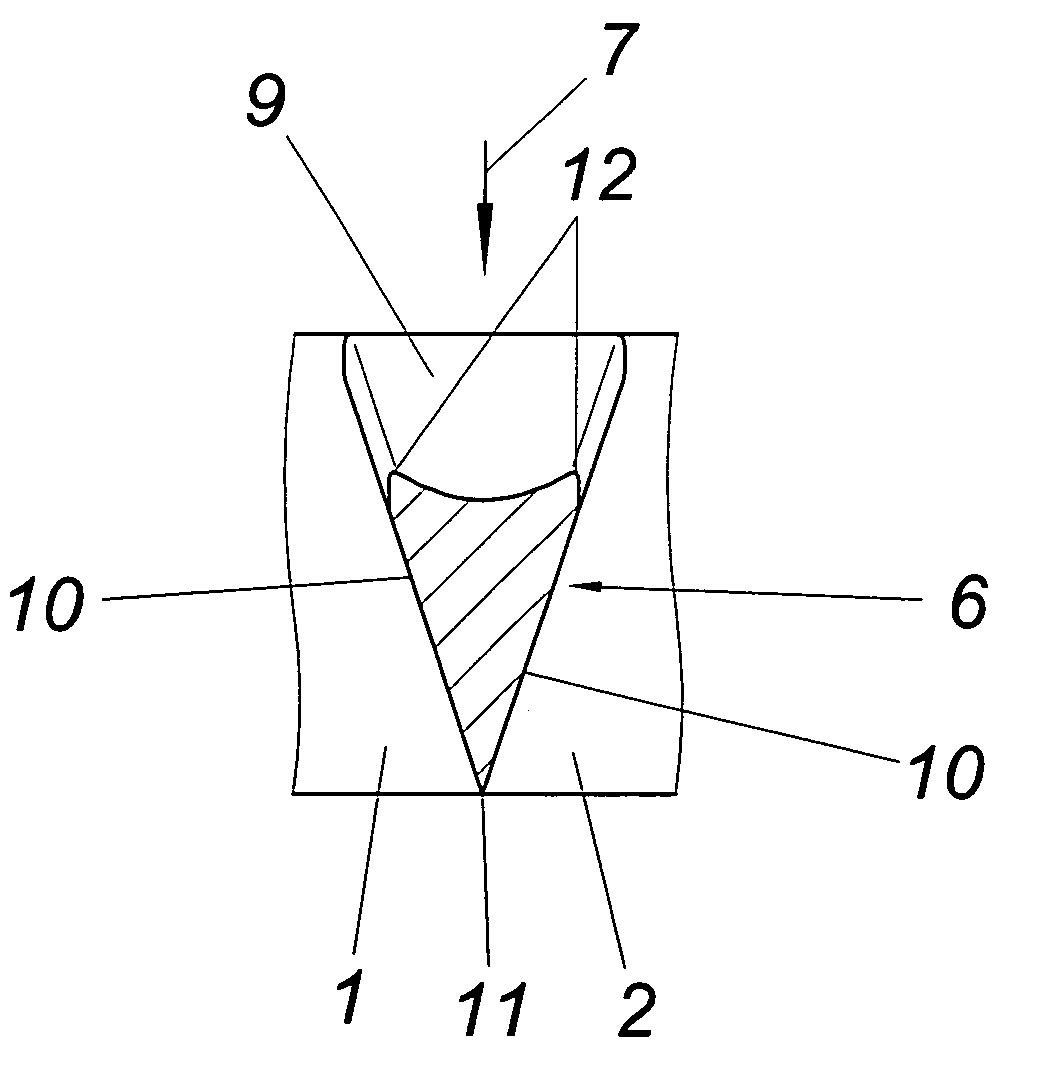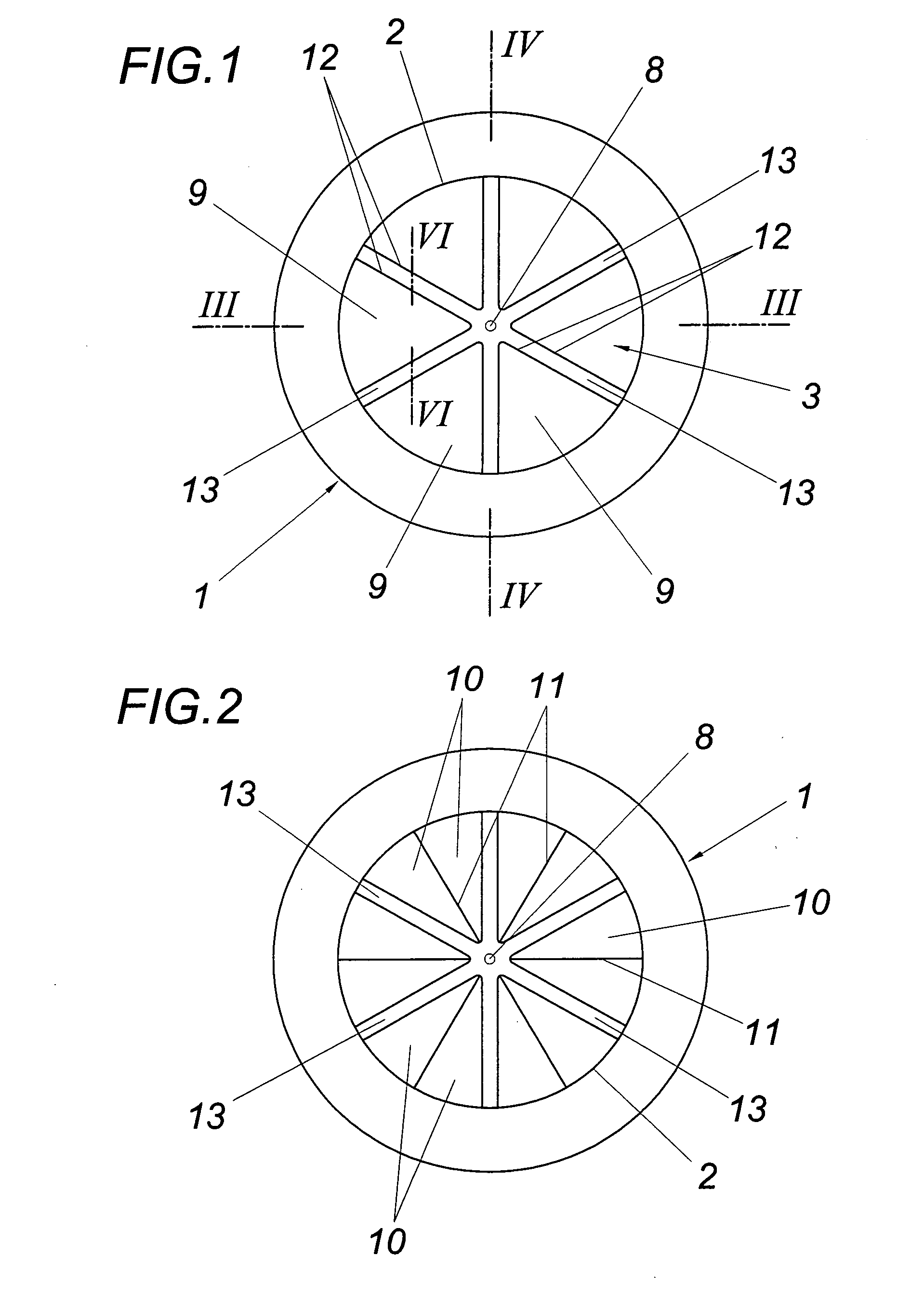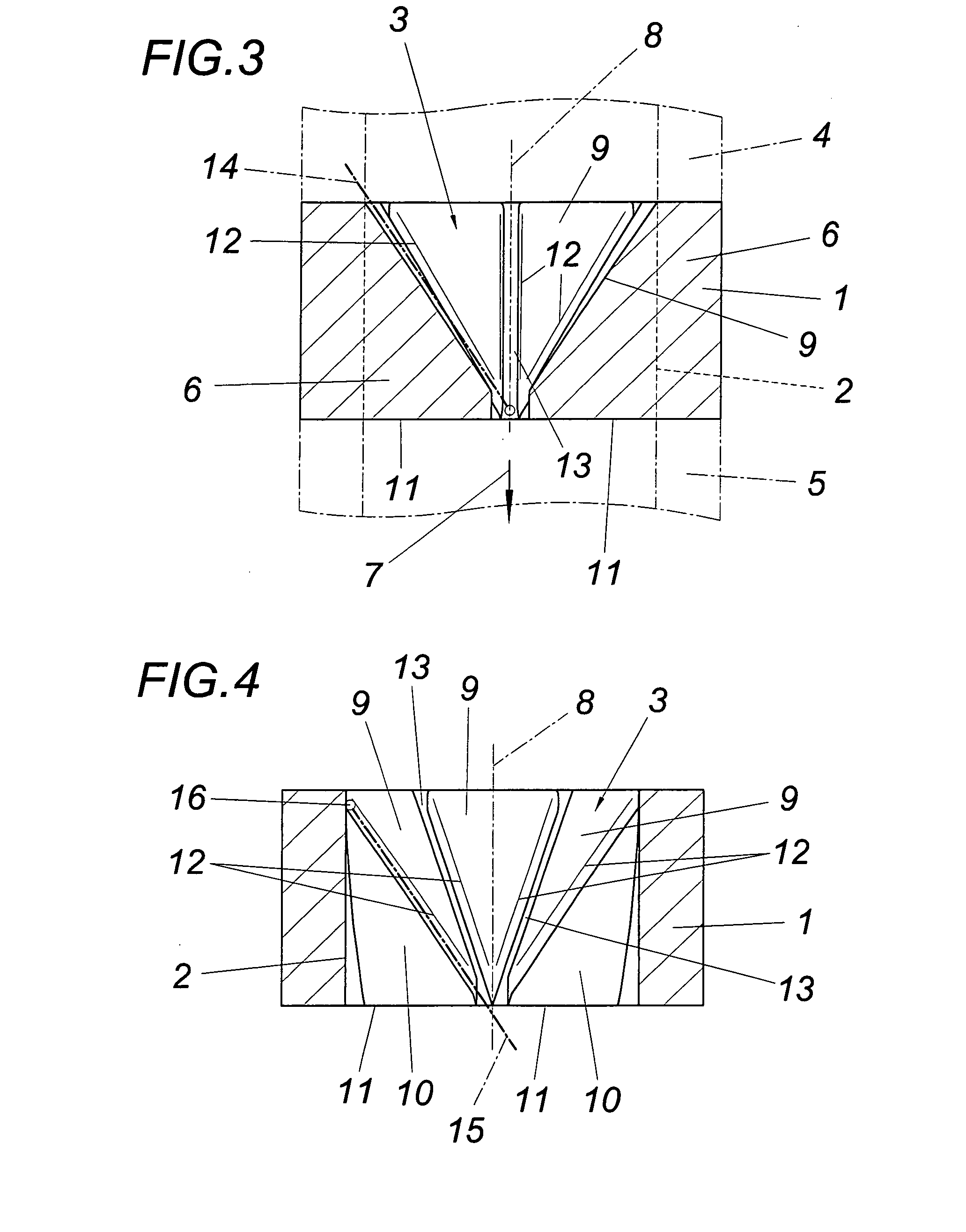Static mixing device, and production method
- Summary
- Abstract
- Description
- Claims
- Application Information
AI Technical Summary
Benefits of technology
Problems solved by technology
Method used
Image
Examples
Embodiment Construction
[0016]The illustrated static mixing device has a circular-cylindrical jacket 1, the inside surface 2 of which forms a flow channel 3 for a molten plastic strand, especially on the basis of polyvinyl chloride, which is supplied and discharged via circular-cylindrical conduits 4, 5, as is indicated in FIG. 3 with the dot-dash line. Mixing elements protrude into the flow channel 3 from the inside surface 2 of jacket 1. These mixing elements have the shape of flow bodies 6, of which one is shown in closer detail in FIGS. 5 and 6. This illustration shows that the flow bodies 6, according to the direction of flow 7 chosen in the embodiment which is not mandatory, comprise a deflecting surface 9 which is inclined from a base extending transversally to the direction of flow 7 towards the axis 8 of the flow channel 3 and two lateral guide surfaces 10 which converge into one edge 11 protruding radially from the inside surface 2. The flow edges 12 obtained between the guide surfaces 10 and the...
PUM
 Login to View More
Login to View More Abstract
Description
Claims
Application Information
 Login to View More
Login to View More - R&D
- Intellectual Property
- Life Sciences
- Materials
- Tech Scout
- Unparalleled Data Quality
- Higher Quality Content
- 60% Fewer Hallucinations
Browse by: Latest US Patents, China's latest patents, Technical Efficacy Thesaurus, Application Domain, Technology Topic, Popular Technical Reports.
© 2025 PatSnap. All rights reserved.Legal|Privacy policy|Modern Slavery Act Transparency Statement|Sitemap|About US| Contact US: help@patsnap.com



